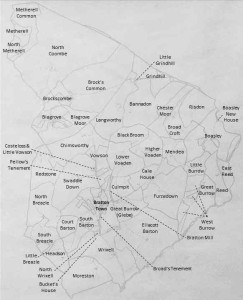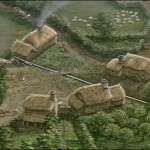Bratton Clovelly is a genealogist’s dream, thanks to a long line of church leaders, clerks and historic families who maintained the parish’s baptism, marriage and burial records. They’ve left a legacy of parish registers dating back to 1555 full of information on the people of Bratton Clovelly’s past. Over 4000 baptisms, 3000 burials and 1000 marriages are recorded. Within the next few weeks, these records will be transcribed and available to help reconstruct the families of the parish. Admittedly, it is just a first draft transcription so there will be errors and gaps where the registers are particularly challenging, but we hope that over time people will let us know of corrections so that we can keep improving the quality of the transcripts.
Although it will be a long-term project, we want to use these transcripts to try to build the family trees of the parish. Our approach will be to choose the most prevalent surnames from the registers and construct trees for each of those surnames. There will be limitations to this approach, not only due to errors and omissions in these first draft transcripts but also because there are many people who may have lived in Bratton Clovelly but were not born there. In addition, they may have married in other places or moved away from the parish. We will limit these trees to the generations where the families have had a fairly continuous presence in the parish but there will still be lots of missing bits of information.
A request for help: If you have worked on a family tree for a family that has a history in Bratton Clovelly, we would appreciate hearing from you. As with all of the information we have collected on the parish, you are welcome to use whatever we have found out about the parish as you see fit. Our request to you is that it would be helpful if we might use some of your information to fill in those gaps in the parish records where people have come into the parish, married elsewhere or left the parish. Combining our information will lead to a more accurate and complete story of the parish’s past.



